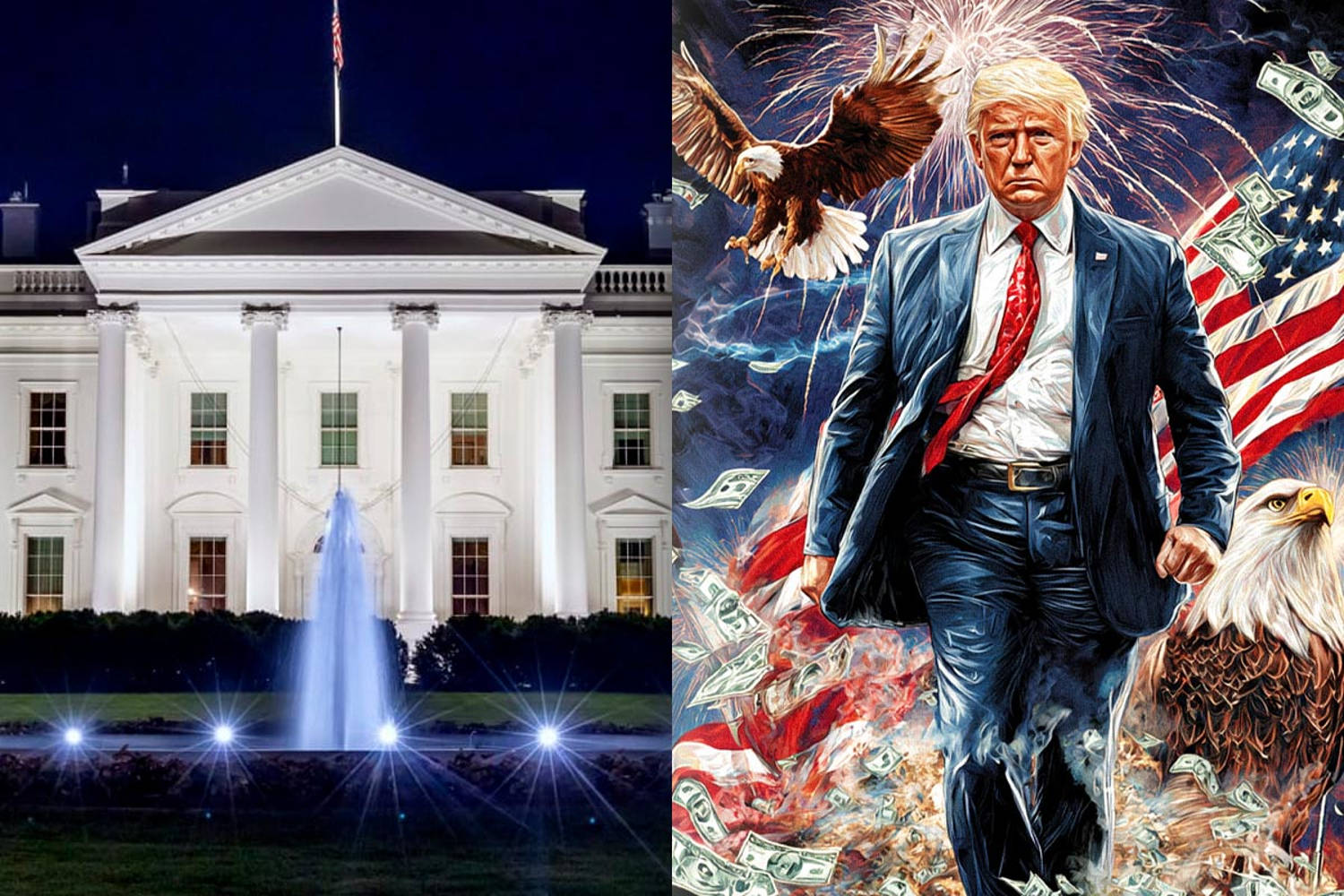
In the digital age of politics, the White House isn't just releasing statements — it’s going viral. As President Donald Trump marks six months into his second term, his administration’s social media game has taken a dramatic and controversial turn.
From meme-heavy content to unapologetic jabs at political opponents, the Trump White House is rewriting the rulebook for presidential communication. Here's how the administration is using memes, influencers, and shock value to shape its message — and why critics say it's changing the nature of U.S. politics.
To mark the six-month milestone of President Trump’s second term, the White House shared a bold social media post promising three things moving forward: continued “winning,” more deportations, and even more memes.
“ATTENTION: TRUMP DIDN’T COME TO PLAY,” the post declared. It featured an illustration of Trump standing in front of an American flag, with a bald eagle, fireworks, and dollar bills surrounding him — a striking visual shared on both Instagram and X.
This post reflects the Trump administration's evolving social media strategy. Traditionally, official White House accounts were reserved for promoting policy. But since January, there’s been a shift. Posts are now tailored to the MAGA base, often laced with humor, memes, and jabs at immigrants and Democrats.
It’s important to note that official White House social media accounts — unlike Trump’s personal platforms — are passed from one administration to the next and are subject to archival by the National Archives under the Presidential Records Act.
Still, several official posts have drawn directly from Trump’s Truth Social account, where he regularly targets political opponents and shares AI-generated images — including portrayals of himself as the pope, a Star Wars character, and Superman.
Joshua Tucker of NYU’s Center for Social Media and Politics noted that such content is designed to grab attention. Unlike in Trump’s first term, today's algorithm-driven platforms reward content that “pops and goes viral,” meaning the White House must compete like any other influencer.
But this strategy raises concerns. Tucker warns that it blurs the line of what’s appropriate for official government communication.
White House spokesperson Liz Huston defended the approach, saying the digital accounts highlight Trump’s “widely popular America First agenda” and his tangible achievements for the American people.
Other agencies have adopted similar strategies. The Department of Homeland Security (DHS), for example, posted a video promoting self-deportation via the CBP One app using the song “Take Me Home, Country Roads.” Another video set to “Ice Ice Baby” directed viewers to an ICE tip line. In June, DHS even shared an AI image of alligators in “ICE” hats, teasing the opening of a controversial Florida immigrant detention center informally dubbed “Alligator Alcatraz.”
Asked whether these posts might seem divisive or trivialize serious matters, DHS spokesperson Tricia McLaughlin said she wasn’t concerned. Instead, she emphasized the need to bypass what she called “hostile” media and speak directly to the public.
“Eight years ago, we didn’t have the tools we do now,” she said. “Today, we can set the record straight ourselves.”
Parker Butler, former digital strategist for the Biden-Harris campaign, offered a starkly different view. He described the administration’s approach as “trolling for the sake of trolling” — content aimed solely at provoking reactions.
Writer Nathan Taylor Pemberton echoed that sentiment in The New York Times, arguing that the GOP is accelerating toward a future where “posting is politics” — calling it “a grim, ugly and barren place.”
Still, the White House boasts major social media growth as proof of success. Officials say the administration has gained over 16 million followers since Inauguration Day, across all platforms, including Truth Social.
The strategy also includes tapping into influencer culture. In May, comedian Theo Von opened for Trump at Al Udeid Air Base in Qatar. Meanwhile, Press Secretary Karoline Leavitt hosts a weekly Instagram and X video series called “MAGA Minute,” recapping the administration’s weekly highlights.
The White House has even held exclusive influencer briefings. Of the 25 influencers invited, nearly all were outspoken Trump supporters — some with direct ties to the administration.
“We will ALWAYS find ways to meet people where they are,” said Deputy Communications Director Kaelan Dorr.
Love it or hate it, the White House’s meme-powered messaging machine shows no signs of slowing down.






0 Comments